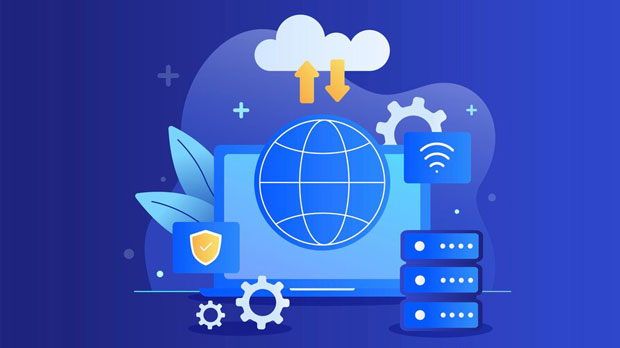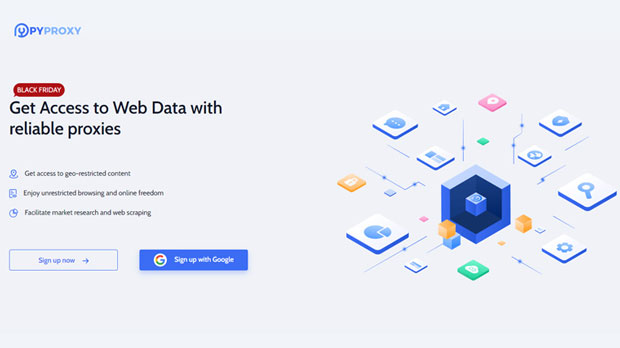In the world of internet security and privacy, proxy servers have become essential tools for enhancing anonymity and safeguarding data. Among various types of proxies, SOCKS5 and HTTPS proxies are the most commonly used. PYPROXY, a Python-based proxy tool, allows users to interact with these proxy types to bypass geographic restrictions, secure connections, and enhance online privacy. This article aims to compare the use of PyProxy with socks5 proxy servers on Windows and HTTPS proxies, focusing on their unique features, advantages, and practical applications in real-world scenarios. Introduction to PyProxy and Proxy TypesPyProxy is a versatile Python tool designed to support various types of proxy servers, providing users with secure and anonymous browsing experiences. SOCKS5 and HTTPS proxies are two of the most commonly utilized proxies for online activities. While both are used to route internet traffic through remote servers, they differ significantly in their protocols, security features, and suitable use cases. Understanding these differences is crucial for users who seek the most effective proxy solutions.What is SOCKS5 Proxy?SOCKS5 is a versatile and secure proxy protocol that routes internet traffic through a proxy server, allowing users to conceal their IP addresses. It operates at a lower level than HTTPS, making it capable of handling a wide range of traffic types, including torrents, gaming, and general internet browsing.Advantages of SOCKS5 Proxy1. Protocol Flexibility: SOCKS5 supports various protocols, including HTTP, FTP, and even UDP, making it a more flexible option for diverse online activities.2. Enhanced Privacy: SOCKS5 does not alter the data packets, ensuring that the original data is transmitted securely with minimal interference.3. Better Performance with Less Latency: Due to its lower-level routing capabilities, SOCKS5 typically provides faster speeds and lower latency compared to HTTPS proxies.4. Unrestricted Access: sock s5 proxies are ideal for activities that require a broad range of internet services, such as online gaming, file sharing, and torrenting, which HTTPS proxies cannot always accommodate.Limitations of SOCKS5 Proxy1. No Encryption: While SOCKS5 proxies offer better performance, they do not encrypt the traffic by default, meaning that sensitive data is not protected without additional encryption layers like SSL or VPN services.2. Compatibility Issues: Some websites or services may block SOCKS5 traffic or may not function properly with SOCKS5 proxies.What is HTTPS Proxy?HTTPS proxies, on the other hand, focus on encrypted connections. These proxies work at the HTTP layer, handling traffic securely by encrypting the data transmitted between the user and the destination server. HTTPS proxies are widely used for ensuring secure browsing, especially when dealing with sensitive personal information or financial transactions.Advantages of HTTPS Proxy1. Encryption for Enhanced Security: HTTPS proxies provide built-in encryption, ensuring that data is secure from end to end. This makes it an excellent choice for users who prioritize privacy and security.2. Ideal for Web Browsing: HTTPS proxies are optimized for web browsing and support encrypted connections for websites, making them a preferred choice for users looking to secure online activities like shopping, banking, or email.3. Firewall Compatibility: HTTPS proxies often bypass network firewalls and restrictions, allowing users to access blocked content on secure websites.Limitations of HTTPS Proxy1. Lower Performance: The encryption process can lead to increased latency and slower speeds compared to SOCKS5 proxies, especially when dealing with large amounts of data.2. Limited to Web Traffic: HTTPS proxies are generally limited to HTTP and HTTPS traffic, meaning they cannot handle other protocols like FTP, P2P, or torrents effectively.Comparison of PyProxy Using SOCKS5 Proxy on Windows vs HTTPS ProxyWhen using PyProxy with either a SOCKS5 or an HTTPS proxy, there are several factors to consider. Each type of proxy offers distinct advantages depending on the user's needs and objectives. Below is a detailed comparison based on several key aspects:1. SecurityWhile both SOCKS5 and HTTPS proxies offer anonymity by masking the user's IP address, HTTPS proxies are inherently more secure due to their encryption capabilities. In contrast, SOCKS5 proxies offer no encryption by default, which could leave sensitive data vulnerable. Therefore, when security is the primary concern, HTTPS proxies are the better choice.2. PerformanceSOCKS5 proxies tend to outperform HTTPS proxies in terms of speed and latency. Because SOCKS5 operates at a lower level and does not encrypt data, it can route traffic more efficiently. For activities that require high-speed internet connections, such as online gaming or large file downloads, SOCKS5 is generally the preferred option. On the other hand, the encryption in HTTPS proxies can cause slight delays, making them less optimal for performance-sensitive tasks.3. Use Cases- SOCKS5 Proxy Use Cases: SOCKS5 is better suited for diverse online activities like gaming, torrenting, and accessing geo-restricted content. It is particularly beneficial for users who need to handle a variety of internet protocols beyond just web browsing.- HTTPS Proxy Use Cases: HTTPS proxies shine when security and privacy are paramount, such as for online banking, shopping, and handling sensitive personal information. These proxies are also preferred when users need to bypass firewalls and access encrypted websites securely.4. Setup and Configuration on WindowsBoth SOCKS5 and HTTPS proxies are relatively easy to set up on Windows using PyProxy. However, configuring a SOCKS5 proxy may involve some additional steps if encryption is required for security purposes. HTTPS proxies, being more focused on encryption, might need additional software or configuration to support non-browser activities.5. Compatibility with ApplicationsSOCKS5 proxies are more versatile in terms of supporting a variety of applications, including non-browser traffic. This makes them ideal for activities like torrenting, P2P file sharing, and certain games. HTTPS proxies, however, are typically confined to web traffic and are not suitable for applications requiring other protocols.Practical ConsiderationsWhen deciding between SOCKS5 and HTTPS proxies in PyProxy, users should consider the following:- Privacy and Security: If online security and privacy are critical, HTTPS proxies should be prioritized due to their built-in encryption.- Performance and Speed: If performance and speed are more important, such as for gaming or large file downloads, SOCKS5 proxies are likely the better option due to their lower latency.- Internet Usage Needs: The choice of proxy depends largely on how you use the internet. For secure browsing and online activities, HTTPS proxies excel, while SOCKS5 is preferable for activities that require handling multiple protocols or accessing geo-restricted content.In conclusion, both SOCKS5 and HTTPS proxies serve unique purposes, and their suitability depends on the user's needs. PyProxy, when used with either of these proxies, can enhance anonymity and security, but understanding the specific strengths and limitations of each type of proxy is crucial in selecting the right one. Users should assess their priorities—whether it's security, speed, or compatibility with different protocols—to make the most informed decision.
Sep 24, 2025



































































